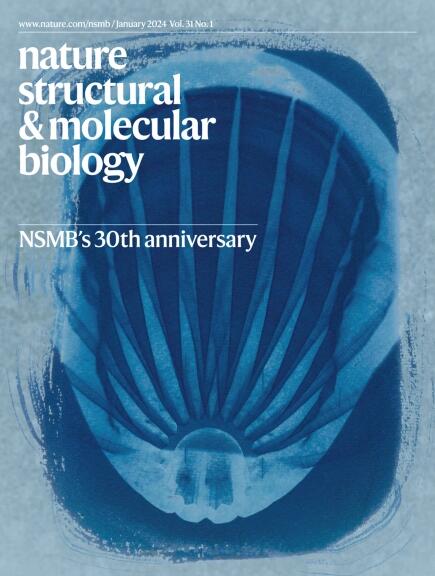The PURB–HOTAIR complex regulates p53-dependent promoter-specific transcriptional activation
IF 10.1
1区 生物学
Q1 BIOCHEMISTRY & MOLECULAR BIOLOGY
引用次数: 0
Abstract
p53 executes its diverse functions through different transcriptional targets but the precise mechanism of promoter-specific regulation by p53 remains largely unknown. Through biochemical purification, we identify purine-rich element binding protein B (PURB), a dual DNA/RNA-binding protein, which acts as a transcriptional corepressor for p53 in a manner dependent on p53 acetylation status. PURB is overexpressed in human cancers, and its knockdown induces p53-dependent activation of p21 but has no effect on other major promoters such as PUMA and MDM2. In contrast to other p53 corepressors, PURB can recognize a unique DNA element at the p21 promoter, with the loss of this element not affecting p53-mediated transactivation but abrogating the ability of p53 to recruit PURB to the p21 promoter for repression. Mechanistically, PURB requires its sequence-specific binding with long noncoding RNA (lncRNA) HOX transcript antisense RNA (HOTAIR) to exert its repressive role. In turn, HOTAIR interacts directly with EZH2 and, bridged by the PURB–HOTAIR complex, p53 can recruit the EZH2 histone methyltransferase to target promoters for transcriptional repression. Further analysis of p53 targets reveals several promoters that may serve as targets for PURB binding, suggesting that this mechanism of PURB-dependent promoter-specific regulation may not be limited to p21. These data establish a mode of lncRNA-mediated regulation of p53 transcription in a sequence-specific manner and reveal a previously unanticipated mechanism for acetylation-mediated promoter-specific regulation through a cis-regulatory element recognized by the PURB–HOTAIR complex. Xia et al. show how p53, guided by cis-regulatory sequences and cofactors (purine-rich element binding protein B and HOX transcript antisense RNA), orchestrates promoter-specific transcriptional regulation.


PURB-HOTAIR复合体调节p53依赖的启动子特异性转录激活
P53通过不同的转录靶点发挥其多种功能,但P53特异性调控启动子的确切机制仍不清楚。通过生化纯化,我们鉴定出富含嘌呤的元素结合蛋白B (PURB),这是一种DNA/ rna双结合蛋白,在依赖于p53乙酰化状态的情况下作为p53的转录辅抑制因子。PURB在人类癌症中过度表达,其敲低诱导p53依赖的p21激活,但对其他主要启动子如PUMA和MDM2没有影响。与其他p53辅抑制子相比,PURB可以识别p21启动子上的一个独特的DNA元件,该元件的丢失不会影响p53介导的转激活,但会取消p53将PURB招募到p21启动子进行抑制的能力。机制上,PURB需要序列特异性结合长链非编码RNA (lncRNA) HOX转录反义RNA (HOTAIR)来发挥其抑制作用。反过来,HOTAIR直接与EZH2相互作用,并且通过PURB-HOTAIR复合物桥接,p53可以招募EZH2组蛋白甲基转移酶到目标启动子上进行转录抑制。对p53靶点的进一步分析揭示了几个可能作为PURB结合靶点的启动子,这表明这种PURB依赖的启动子特异性调控机制可能并不局限于p21。这些数据建立了lncrna以序列特异性方式介导p53转录的模式,并揭示了先前未预料到的通过PURB-HOTAIR复合体识别的顺式调控元件介导的乙酰化启动子特异性调控机制。
本文章由计算机程序翻译,如有差异,请以英文原文为准。
求助全文
约1分钟内获得全文
求助全文
来源期刊

Nature Structural & Molecular Biology
BIOCHEMISTRY & MOLECULAR BIOLOGY-BIOPHYSICS
CiteScore
22.00
自引率
1.80%
发文量
160
审稿时长
3-8 weeks
期刊介绍:
Nature Structural & Molecular Biology is a comprehensive platform that combines structural and molecular research. Our journal focuses on exploring the functional and mechanistic aspects of biological processes, emphasizing how molecular components collaborate to achieve a particular function. While structural data can shed light on these insights, our publication does not require them as a prerequisite.
 求助内容:
求助内容: 应助结果提醒方式:
应助结果提醒方式:


